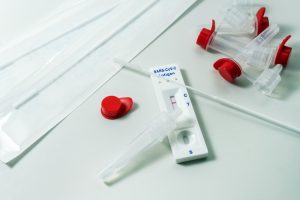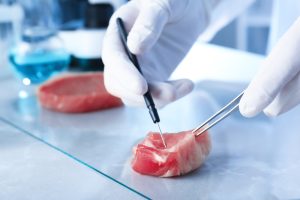Rhabdomyolysis is the term used to describe a condition occurring due to direct or indirect muscle injuries. The term means ‘the breakdown of damaged muscles’. Due to the quick breakdown of skeletal muscles, there is an accumulation of the muscle breakdown products in the extracellular fluid and the body’s circulation, ultimately causing kidney failure.
Epidemiology
Around 85% of people suffering from trauma also suffer from rhabdomyolysis and about 10-50% amongst them will develop acute renal failure. Victims of rhabdomyolysis have a mortality rate of 20% and in the USA, 26,000 cases of rhabdomyolysis are reported annually with males having a higher proportion.
Causes and risk factors
Rhabdomyolysis can be due to traumatic or non-traumatic causes. The traumatic causes are:
- Crush injuries such as auto accidents, falls, or building collapses
- Prolonged immobilisation following a fall or unconsciousness on a hard surface during illness or while under the influence of alcohol or medication
- Burns due to electrical shock injury, or a lightning strike
- Venom from a snake or insect bite
Non-traumatic causes are:
- Alcohol
- Illegal drugs such as heroin, cocaine, or amphetamines
- Extreme muscle strain in trained or untrained athletes
- Medicines as antipsychotics or statins, especially at high doses
- A very high body temperature or heat stroke
- Seizures or delirium tremens
- A metabolic disorder such as diabetic ketoacidosis
- Diseases of the muscles such as congenital muscle enzyme deficiency or Duchenne’s muscular dystrophy
- Viral infections such as the flu, HIV, or herpes simplex virus
- Bacterial infections and sepsis
Certain risk factors known to increase rhabdomyolysis are:
- Poorer kidney or liver function
- Type 1 or type 2 diabetes
- Past heart attack or stroke
- Age greater than 65 years
- Past history of rhabdomyolysis
- Hot and dry climate
Signs & symptoms
The “classic triad” of rhabdomyolysis symptoms are:
- Muscle pain in the limbs or lower back
- Muscle weakness or trouble moving the arms and legs
- Dark red or brown urine or decreased urination
The initial symptoms of rhabdomyolysis are asymptomatic. However, in later stages, the common symptoms of rhabdomyolysis include:
- Muscle weakness
- Low urine output
- Fatigue
- Soreness
- Bruising
- Dark, tea-coloured urine
- Infrequent urination
- Fever
- Sense of malaise, or feeling sick
- Nausea
- Vomiting
- Confusion
- Agitation
Diagnosis
The diagnosis of rhabdomyolysis is clinically based on the scenario, history, and clinical findings. Additionally, serum levels of creatine kinase are ordered. If its value is more than 5 times the upper limit of normal, rhabdomyolysis is confirmed.
Other laboratory testing includes:
- Presence of myoglobin in urine (i.e. myoglobinuria). It is detected when urinary myoglobin exceeds 250 mcg/mL
- Serum creatinine
- Potassium levels
- Uric acid levels
- Calcium levels
- Phosphate levels
- Liver function tests
- Lactic acidosis
- Thrombocytopenia
Treatment
The sequence of management in a case of rhabdomyolysis is:
- Assessment of the ABCs i.e. “Airway, Breathing, and Circulation” in post-traumatic cases.
- Identification and correction of the underlying cause (eg, trauma, infection, or toxins).
- Rehydration with the electrolyte, acid-base, and metabolic abnormalities. Intravenous fluids may help to flush out myoglobin from the blood and kidneys.
- Medications such as bicarbonate and diuretics will help to keep the kidneys functioning. They also treat high potassium levels in the blood, and low blood calcium levels, when given appropriate IV fluids.
- Dialysis – In cases of severe kidney damage and acute renal failure, dialysis may be needed. Dialysis is a technique where the blood is taken out of the body and cleaned in a special machine to remove waste products.
- Home remedies such as:
- Resting so that the muscles can recover and rehydrate to help prevent further kidney damage.
- Repositioning the body in a comfortable posture and trying to relax.
- Maintenance of proper hydration during athletic exertion. Drinking plenty of water and other clear liquids, such as light broth and sports drinks before exercise.
- Diet must be modified to help address metabolic disorders or inborn errors of metabolism.
- Avoidance of stressful activities that cause recurrent muscle pain or rhabdomyolysis.
- Prompt attention and management to indicators of heat exhaustion during hot and humid conditions.
Depending on the cause of rhabdomyolysis, surgery may also be necessary. Limb fractures should be treated with surgical and orthopaedic procedures.
Complications
Some of the major complications of rhabdomyolysis are:
- Compartment syndrome
- Disseminated intravascular coagulation (DIC)
- Lowered platelet count
- Prolongation of the prothrombin time
- Decreased volume in body
- Irregular heart rhythm
- Heart attack
- Hepatic dysfunction
- Acidosis
- Acute kidney failure
- Death
Conclusion
Rhabdomyolysis is a common condition in the emergency department. Patients, especially those suffering from trauma, must be made aware of the causes of rhabdomyolysis and its prevention. In cases of a history of inherited muscle enzyme and energy substrate deficiencies, it may be necessary to provide genetic counselling for families. All high-school and college athletes should be educated about the signs of dehydration and heat-related injuries. Patients should be advised on hydration and external methods of cooling.
Any intense exercise such as marathons, squats, pushups, sit-ups, and high-intensity interval training, can cause rhabdomyolysis, especially in untrained individuals. Rhabdomyolysis is extremely common in hot or humid conditions, and special care must be taken during such conditions.












